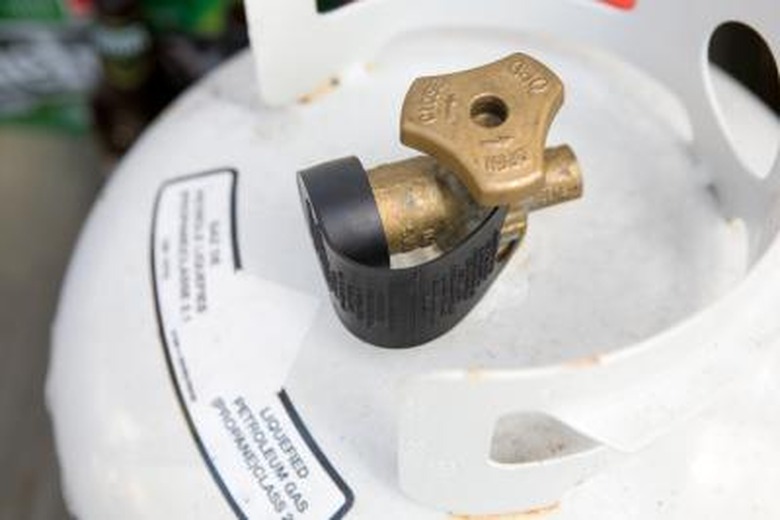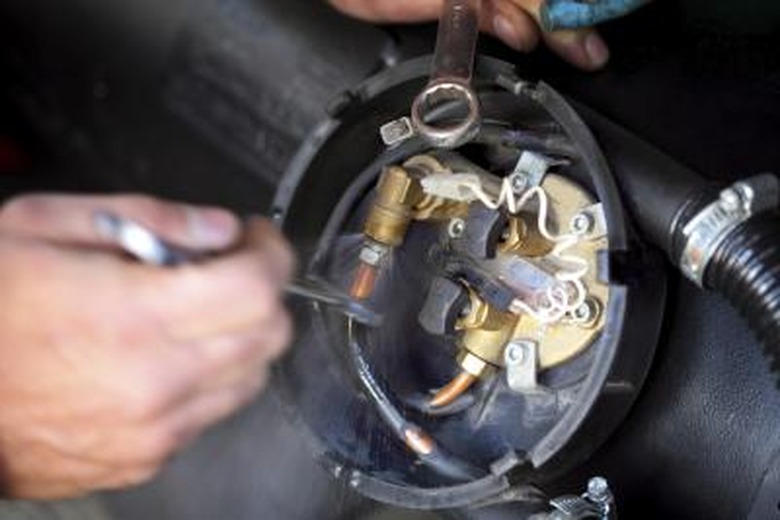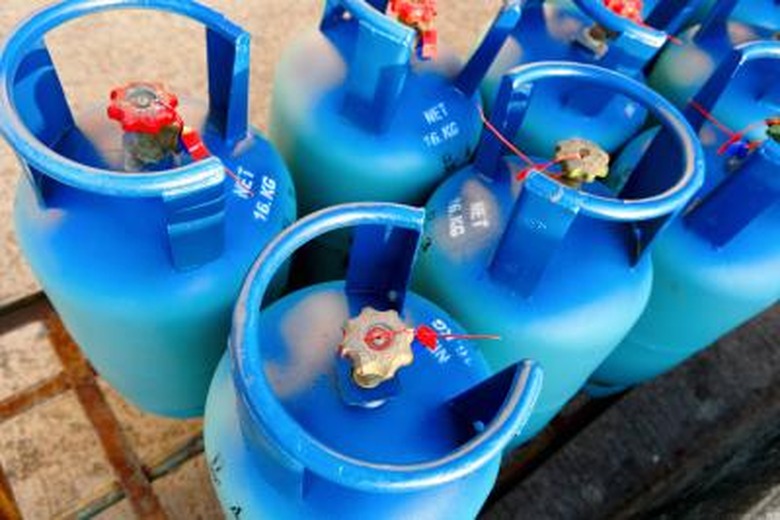How To Troubleshoot Problems With A Propane Tank
Propane technology has enabled people to grill outside or heat their home cheaply and efficiently with the flip of a switch. Propane canisters are easily refillable and reusable, making it very convenient to use this technology. Since propane tanks have only a few mechanical parts, they are relatively easy to troubleshoot.
Step 1
Be sure you have enough gas in your tank to run your propane device. First detach all valves, then gently shake the tank. If it sounds low on gas, simply detach the tank and take it to the nearest filling station. Attaching a gauge to your propane tank will let you know when it is time for a refill without having to guess how much is in your canister.
Step 2
Check the hose attachment to the propane tank. Some propane tanks have safety features that will not allow gas to escape from the canister unless the hose connection is secured snugly with the gas release mechanism. Make sure that the screw-on valve is also tightened.
Step 3
Shut off all of the valves from the hose. Reattach the hose assembly to the tank and open the valve on the tank. Allow the tank to sit for approximately one minute and then open the hose valve. This should allow some pressure to build up in the hose so that the pressure is calibrated to the pressure of the tank.
Step 4
Remove the entire hose and assembly from the tank. Open the valves from the hose assembly so that any gas can bleed out from the hose itself. Close the valve and reassemble the hose attachment again. Open the tank valve and wait a few minutes for the hose pressure to calibrate again with the tank.
Step 5
Reset the excess flow safety by turning the tank valve off and then disconnecting the regulator. If you are using a grill, set all of the burner knobs to "High" and wait for a minute. Turn the burner knobs off and connect the regulator and open the tank valve slowly.
Step 6
Exchange your tank for another one. Sometimes the previous steps will not help you find the tank's problem. Take it back to a filling station and explain that your tank will not work and that you have checked your valves and hoses. The filling station should be able to exchange your filled canister for another tank. If it is the cylinder valve that is nonoperational, then there is not much you can do to fix it.





